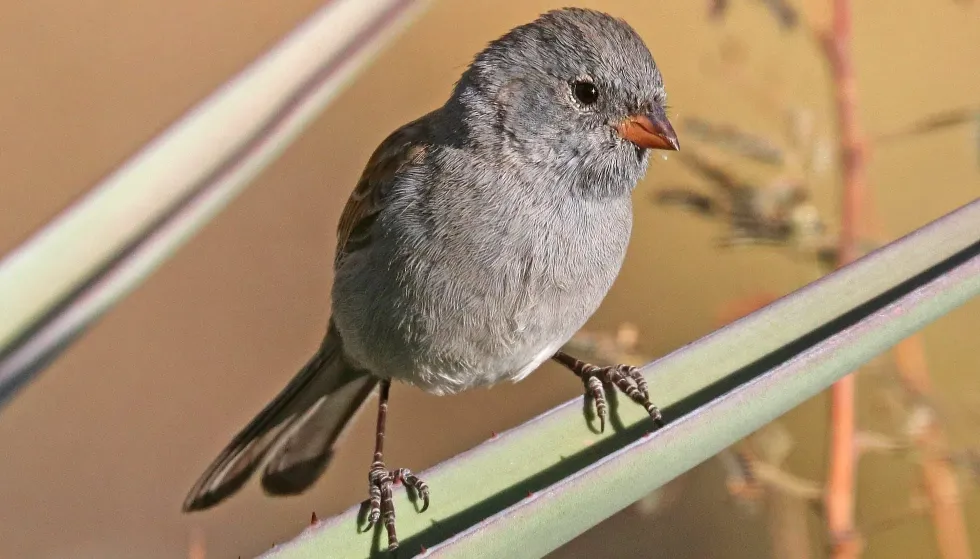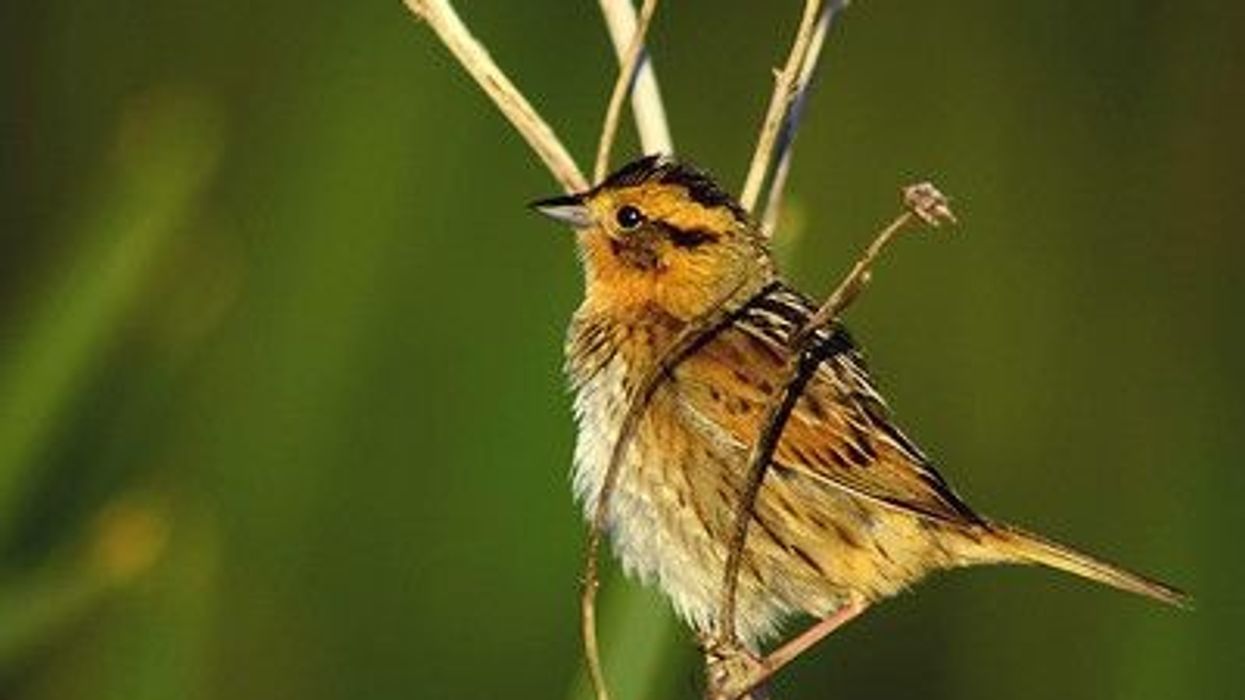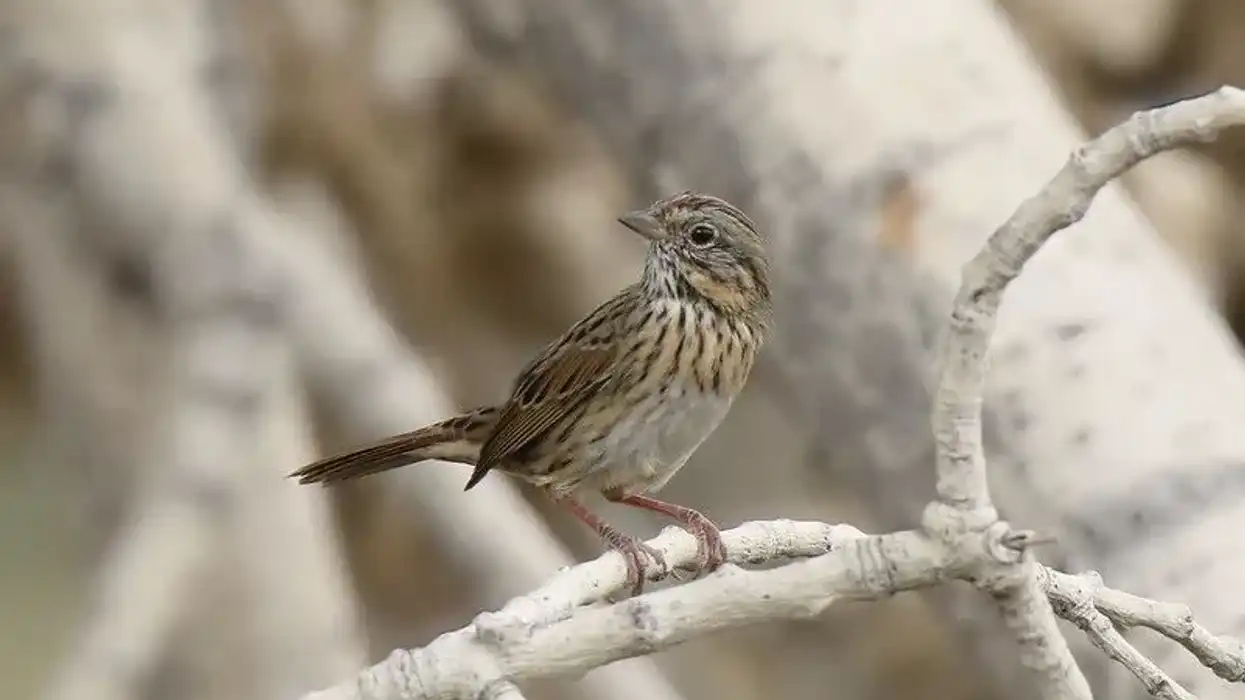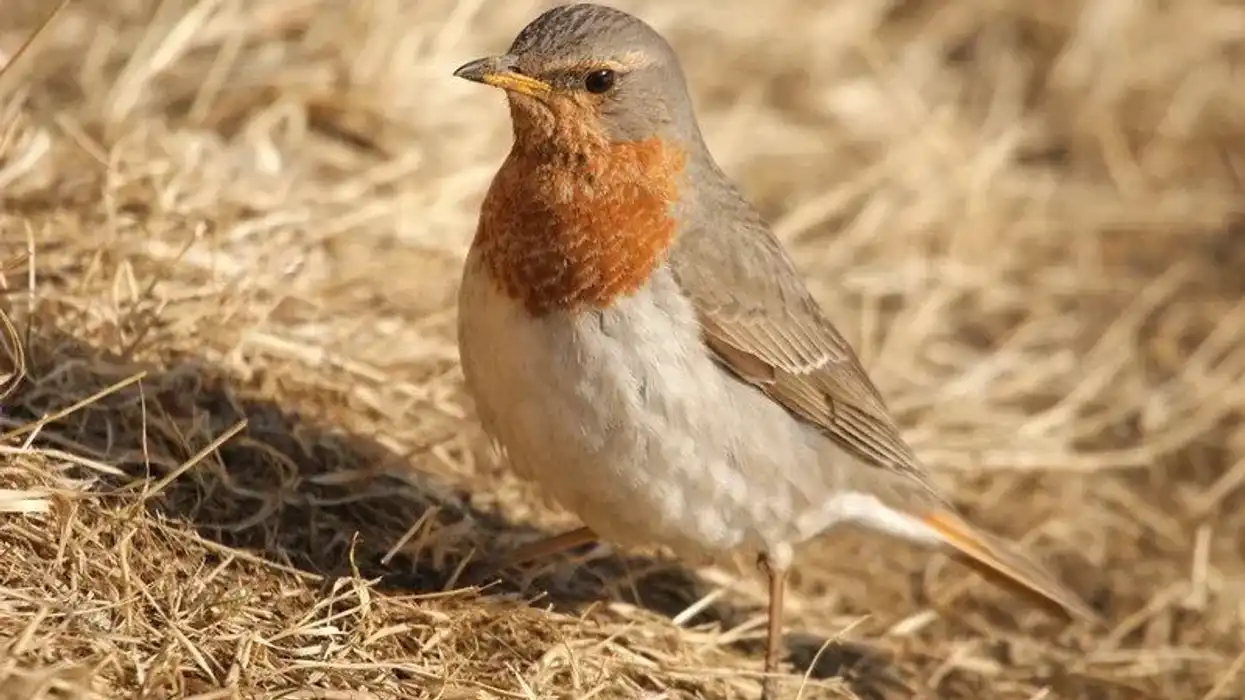The Black-chinned Sparrow, Spizella atrogularis as it is scientifically known, belongs to the Passerellidae family, a close relative of the field sparrow.
The Black-chinned Sparrow distribution is found in the range that includes parts of California, Texas, Nevada, and Utah and is known to be an occasional vagrant in Oregon and Colorado. There have been four subspecies of the Black-chinned Sparrows.
The habitat of this species is found in or near arid and semi-arid regions and chaparrals, pine and juniper woodlands, sagebrush, and brushy shrublands.
The breeding of these species takes place around late April to June and these sparrows arrive at the breeding range, ground, or habitat in late March. During the breeding season, males are known to sing from perches, and aggressively chase each other.
The nest is made by both males and females and both males and females also collect the materials like grasses and stems for the nest the nest is built near or in some dense shrubs.
These species have slender bodies and are long-tailed. As the name suggests, males of this species are known to have a black chin, throat, and some part of their face in their breeding plumage while the female Black-chinned Sparrow has no such black spot or color on their chin or throat.
The body and head of these species are gray and the bill is pinkish. The bill is short and stout.
The young ones, juveniles, or the chicks are known to have similar plumage to that of an adult in its non-breeding plumage. Males and females are known to look similar in their non-breeding plumage.
The food of these species includes insects, seeds, and some flowering plants. The Black-chinned Sparrow's lifespan is unknown.
The population of this species is considered to be declining and in some places, the population of these species is protected but their conservation status is Least Concern as stated by IUCN. It is quite fascinating to learn about Black Chinned-Sparrow, and Spizella atrogularis, and if you are interested, read about Cooper's Hawk and Magpie too.
Black-chinned Sparrow Interesting Facts
What type of animal is a Black-chinned Sparrow?
The Black-chinned Sparrow, Spizella atrogularis is a bird.
What class of animal does a Black-chinned Sparrow belong to?
It belongs to the class of Aves of birds.
How many Black-chinned Sparrows are there in the world?
The global population of these birds is estimated to be between 450,000-1,100,000.
Where does a Black-chinned Sparrow live?
These birds are found in the Southwestern United States and Mexico. The Black-chinned Sparrow range where this species can be regularly seen or spotted includes parts of California, Texas, Nevada, and Utah and is known to be an occasional vagrant in Oregon and Colorado.
What is a Black-chinned Sparrow's habitat?
These birds are known to be found in arid and semi-arid regions or types of habitat and inhabit chaparrals, pine and juniper woodlands, sagebrush, and brushy shrublands. These birds also inhabit rocky, rugged areas in remote habitats which are commonly known to be the breeding range or habitat of this bird.
Who does Black-chinned Sparrow live with?
These birds are generally solitary but can be seen in single-species groups in winter during foraging. It is mostly found alone or in pairs but very rarely it can be seen in small and loose groups mixed with Brewer's sparrow. These birds are known to have a hybridized breeding with a Brewer's Sparrow.
How long does a Black-chinned Sparrow live?
The exact lifespan of these birds is unknown.
How do they reproduce?
These birds are known to mate around April to June and arrive at the breeding grounds during late March. During the breeding season, males are known to sing from perches to defend their territories and singing rivalry takes place and they are known to aggressively chase each other.
Pairs are known to be together for a single breeding season. Both males and females collect grasses and other nest materials and the nest is made around two feet above the ground in or near a dense shrub.
The nests of these sparrows are cup-shaped. Around two to five light or dull blue eggs are laid in the nests. Incubation takes place for about 12-13 days and is done mostly by the female.
The young ones or the chicks are featherless and altricial. These chicks are fed by both parents and these chicks or young fledge in about 11-13 days.
What is their conservation status?
The conservation status of these birds is Least Concern. This species is protected by the Migratory Bird Treaty Act and is known to be listed under 'Bird of Conservation Concern' by the US Fish and Wildlife Service.
Black-chinned Sparrow Fun Facts
What does a Black-chinned Sparrow look like?
This sparrow is a small one with a slender body. It has a rounded head and has a high crown.
The tail of this sparrow is long and is considered to be longer than all other sparrows of this genus. Both the males and females are almost similar but males are known to be slightly larger.
The body along with the head of the adult sparrows are grayish in color, the rump and coverts of the upper tail are also grayish and the back of these sparrows are reddish-brown with some black stripes or streaks. The belly part of these sparrows is whitish.
The feathers of the wings and tails are dark brown with the borders, ends, or edges lighter or whitish. The legs and feet are dark brown. The breeding plumage of these sparrows is different and the males have black on their chin and throat and some part of their face.
Its plumage is known to be similar to that of a Dark-eyed junco. Females do not have these blackish features.
The young ones have plumage similar to that of the non-breeding plumage. The bill of these sparrows is short or small, fat or plump, and pinkish.

How cute are they?
These birds are considered cute because of their size.
How do they communicate?
Not much information is available about the communication of these birds but just like other sparrows and birds, they are known to produce songs and calls to communicate, for instance, these birds sing during the breeding season to defend their territories. The call of this species during flight is known to be similar to that of a chipping sparrow.
How big is a Black-chinned Sparrow?
These birds are known to be small ones and the Black-chinned Sparrow size is known to be between a Black-throated Bushtit and Canyon Towhee. These birds are 5-13 in (127-330 mm) long.
How fast can a Black-chinned Sparrow fly?
The exact speed of these birds is unknown but they are known to fly fast. The Black-chinned Sparrows are known to fly close to the ground.
How much does a Black-chinned Sparrow weigh?
The weight of these birds ranges from 0.01-0.03 lb (0.009-0.015 kg).
What are the male and female names of the species?
There are no specific names for the males and females of the species.
What would you call a baby Black-chinned Sparrow?
The baby of these sparrows is known as young ones or chicks.
What do they eat?
Primarily, the food of these sparrows includes insects that are picked from trees, shrubs, and the ground. During winter, these are known to feed on seeds found in grasses and some flowering plants.
Are they poisonous?
These sparrows are not considered poisonous.
Would they make a good pet?
Not much information is available about these sparrows as pets. Since they are wild birds, it is probably best to leave them in their natural habitat where they are not restricted or confined.
Did you know...
This species was first described or discovered in Mexico in 1851 by a German Ornithologist, Jean Louis Cabanis.
Four subspecies of these birds have been recognized or identified namely Spizella atrogularis, evura, caurina, cana, atrogularis. These subspecies can be found in west-central California, southwestern and Baja California, and north-central Mexico.
Spizella means finch in Ancient Greek and is derived from the word Spiza, the scientific name atrogularis is derived from two words Ater and Gularis meaning black and throated respectively but it is a different species from a Black-throated Sparrow.
Another bird that is often confused with a sparrow is a Black-capped chickadee that looks like a sparrow but has a black head.
Some sparrows are known to be black as they have a prominent black bib.
This bird is known to be a close relative of a field sparrow.
The ideal or the best time to look for or spot these birds is the breeding season of this species as males are known to sing from exposed perches. Carefully look at the tops of the shrubs which are short in their known breeding range or habitat from April to June.
The pinkish bills and gray heads of these species make them easy to look for.
What is the smallest sparrow?
LeConte's Sparrow is known to be the smallest New World Sparrow that is found in North America.
Are they predators?
Yes, these sparrows are considered predators as they feed on insects.
Black-chinned Sparrow predators include Garter snakes, western scrub jays, rodents, lizards, and snakes, and mostly feed on the young ones and the eggs.
Here at Kidadl, we have carefully created lots of interesting family-friendly animal facts for everyone to discover! Learn more about some other birds from our chicken hawk facts and Meyer's parrot fun facts pages.
You can even occupy yourself at home by coloring in one of our free printable black-chinned sparrow coloring pages.










